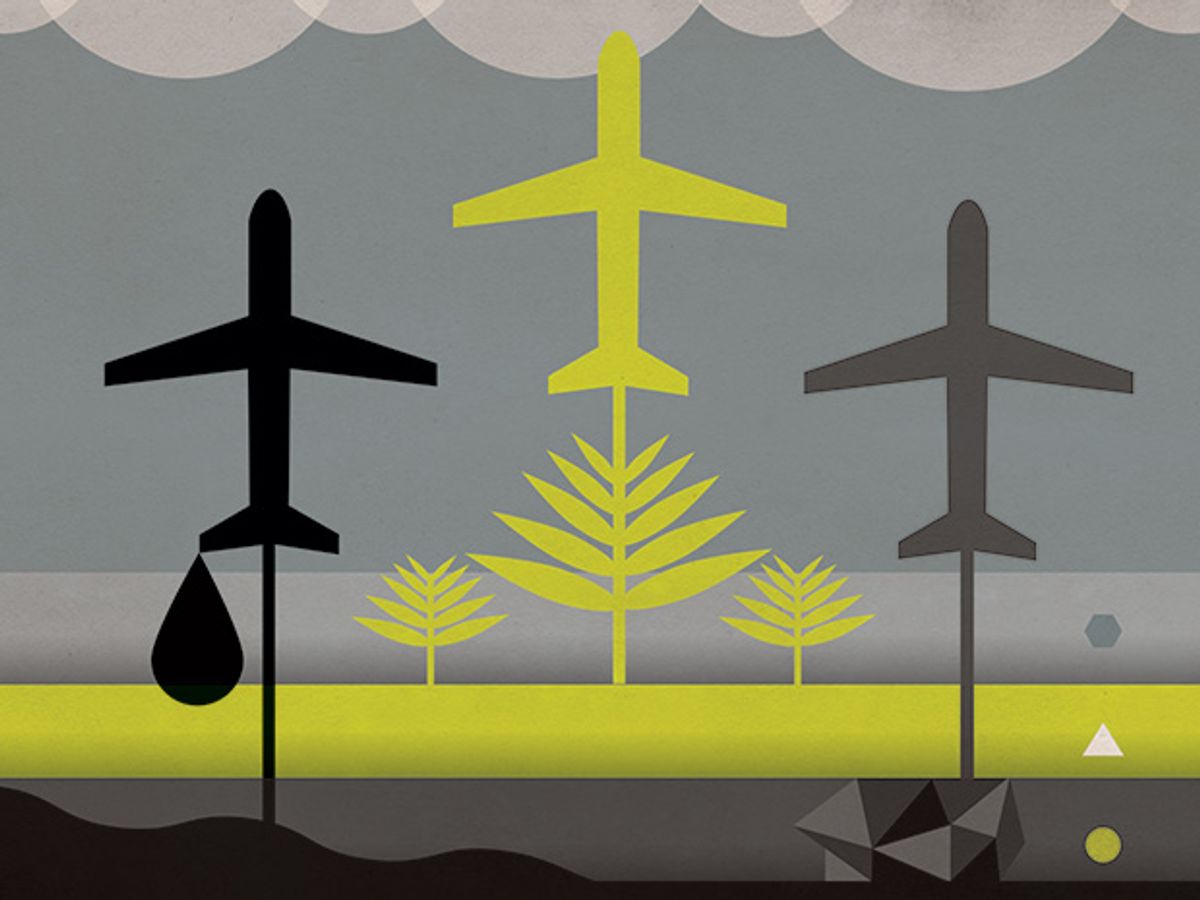Eliminating kerosene-based jet fuel will be one of the greatest challenges to creating a world without carbon emissions. Aviation accounts for only about 2 percent of the global volume of such emissions and some 12 percent of the total released by the transportation sector, but converting to electric drive is much harder for airplanes than for cars and trains.
Today’s jet fuel—the most common formulation is called Jet A-1—has a number of advantages [pdf]. It packs 42.8 megajoules into each kilogram, it can stay liquid down to –47 °C, and it beats gasoline on cost, evaporative losses at high altitude, and risk of fire during handling. No real rivals yet exist. Batteries capacious enough for intercontinental flights carrying hundreds of people are still the stuff of science fiction, and we will not see wide-bodied planes fueled by liquid hydrogen anytime soon.
What we need is a fuel equivalent to kerosene that’s derived from plant matter [pdf] or organic waste. Such a biojet fuel would release no more CO2 during combustion than the plants sequester during growth. The proof of principle has been demonstrated: Since 2007, test flights using blends of Jet A-1 and biojet have proved suitable as drop-in alternatives for modern aircraft.
In March 2016, United began using biojet fuel at Los Angeles International Airport, taking deliveries from AltAir’s Paramount refinery, where the fuel is made by hydroprocessing esters and fatty acids derived from beef tallow and pig fat and from agricultural wastes. Starting in 2018, Nevada’s Fulcrum BioEnergy will produce biojet from municipal waste and supply it to United and Cathay Pacific.
But United’s biojet contract will provide only 2 percent of the airline’s annual fuel consumption, an excellent example of the daunting scale of the required substitution. True, today’s airliners are increasingly frugal [pdf]: In 2015 they burned about 50 percent less fuel per passenger-kilometer than they did in 1960. But those savings have been swamped by the continuing expansion of aviation, which has raised annual consumption of jet fuel to more than 50 million metric tons by U.S. carriers and more than 250 million metric tons worldwide.
To meet this demand largely with biojet fuel, we would have to go beyond organic wastes and tap oil-rich seasonal or perennial oil crops whose cultivation would require large areas and create environmental problems. Temperate-climate oil crops have relatively low yields: With an average yield of 0.4 metric ton of biojet per hectare of soybeans, the United States would need to put 125 million hectares—an area bigger than Texas and California and Pennsylvania combined—under the plow to supply its own jet fuel needs. That’s nearly four times the 34 million hectares [pdf] that the country devoted to soybeans in 2016. Even the highest-yielding option, oil palm, which averages 4 metric tons of biojet per hectare, would still require more than 60 million hectares of tropical forest to supply the world’s aviation fuel. That would necessitate quadrupling the area devoted to palm oil cultivation, leading to the release of carbon accumulated in natural growth.
But why take over huge tracts of land when you can derive biofuels from oil-rich algae? Intensive, large-scale cultivation of algae would require relatively little space and would offer very high productivity. However, Exxon Mobil’s experience shows how demanding it will be to scale up to tens of millions of metric tons of biojet every year. Exxon, working with Craig Venter’s Synthetic Genomics, began to pursue this option in 2009, but by 2013, after spending more than US $100 million, it concluded that the challenges were too great and decided to refocus on long-term basic research.
As always, the task of energy substitutions would be made easier if we wasted less, say, by flying less. But forecasts are for further substantial growth of air traffic, particularly in Asia. Get used to the unmistakable smell of aviation kerosene: It’ll be here for a long time to come.
This article appears in the July 2016 print issue as “Flying Without Kerosene.”
